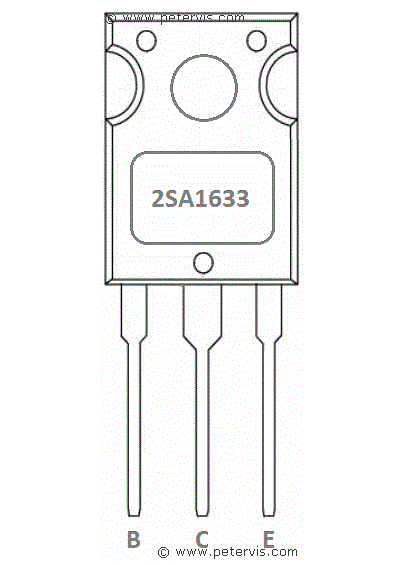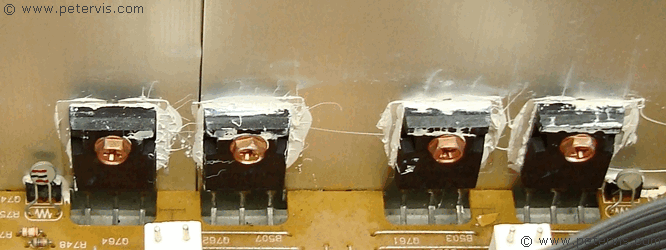2SA1633 and 2SC4278 Transistor Diagnosis
The 2SA1633 and 2SC4278 usually exhibit a hard short between a pair of their junctions, which results in conduction occurring in both directions. A hard short such as that also usually results in the protection circuit tripping thereby preventing damage to the loudspeakers. In this situation, the protection relay usually does not engage. Sometimes damage can be in the form of open junctions, where a pair of junctions will not conduct in either direction. In this case, the amplifier does start, but the sound in one channel will be much lower volume and distorted due to only one phase operating.
I usually use a digital meter with continuity buzzer (or diode check) function, so I can quickly check all the junctions for opens or shorts. We can usually detect hard shorts without having to remove the transistor, however, for opens, it is better to remove it from the circuit. A diagnostic matrix such as the one shown below is useful to engineers for checking their transistors by methodically connecting the black probe (negative), and red probe (positive) to the relevant junctions.

| B | C | E | Conducts (Yes/No) |
| positive | negative | No | |
| negative | positive | Yes | |
| positive | negative | No | |
| negative | positive | Yes | |
| positive | negative | No | |
| negative | positive | No |

| B | C | E | Conducts (Yes/No) |
| positive | negative | Yes | |
| negative | positive | No | |
| positive | negative | Yes | |
| negative | positive | No | |
| positive | negative | No | |
| negative | positive | No |
This Article Continues...
JVC AX-V4JVC AX-V4 Electronic Engineering
JVC AX-V4 Audio Power Transistors
2SA1633 and 2SC4278 Transistor Diagnosis
JVC AX-V4 Idling Current Adjustment
JVC AX-V4 Chipset
JVC AX-V4 Power Supply
JVC AX-V4 Back Connections
